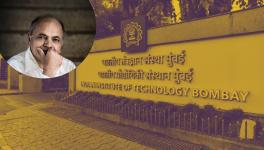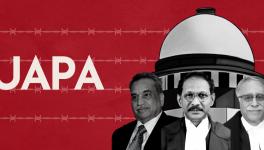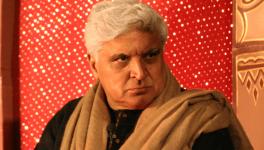Why Government Must Take Back the Draft Cinematograph (Amendment) Bill, 2021
Examining the recently proposed changes to the Cinematograph Act, SIDDHARTH CHATURVEDI explains how it would increase the union government’s power of censorship of films, and why it should be opposed.
ON June 18, the Union Government proposed to introduce new changes into the existing Cinematograph Act, 1952. Its draft amendment bill for the same is open for public comments till July 2. However, many of the changes proposed by the bill are being seen as problematic. What are the proposed changes, and how will they affect the working of the film industry?
Current framework of film certification
The Central Board of Film Certification (CBFC) grants certification to films if they meet all of the criteria stipulated under Section 5A of the Cinematograph Act.
As per Section 5B of the Act, the CBFC can reject a film if it is against “the interests of the sovereignty and integrity of India, security of the State, friendly relations with foreign States, public order, decency or morality, or involves defamation or contempt of court or is likely to incite the commission of any offence” This provision is taken from Article 19(2) of the Indian Constitution, which lays out the permissible restrictions on the freedom of speech and expression of citizens.
Interestingly, section 5B also empowers the union government to issue directions for “setting out the principles which shall guide the authority competent to grant certificates under this Act in sanctioning films for public exhibition.” These principles, enumerated by the union government in the form of guidelines for the CBFC, go beyond the scope of reasonable restrictions.
For example, Guideline 2 states that the CBFC shall ensure that, among other things, “anti-social activities such as violence are not glorified”, “human sensibilities are not offended by vulgarity, obscenity, or depravity”, and “such dual meaning words as obviously cater to baser instincts are not allowed”. Overall, Guideline 2 contains a list of 19 items, most of which contain similar vague terms which are highly interpretative in nature.
Also read: Filmmakers file Petition on Censorship, Pre-Censorship and Certification of Films
What the draft amendment bill seeks to do
The draft amendment bill seeks to vest the union government with revisionary powers to review a film after it has been given a certificate by the CBFC.
This, when the power to review a film after its approval by the CBFC has already been struck down by the Supreme Court in its judgment in the case of Union of India vs. K.M. Shankarappa, (2001) 1 SCC 582. By giving the union government the power to ask the CBFC to re-examine a film, the proposed bill aims to overturn this decision of the apex.
As it is, the government already exercises excessive power under the current provisions of the Cinematograph Act. Under Section 5E of the Act, for example, it has the power to order the revocation or suspension of the certificate of films. Such an order is open to review under Section 5F.
This follows the government’s decision, in April 2021, to abolish the Film Certification Appellate Tribunal through the Tribunals Reforms (Rationalisation and Conditions of Service) Ordinance, 2021 promulgated by it. In the wake of the ordinance, the only resort available to any filmmaker aggrieved by a decision of the CBFC is to approach the relevant High Court.
The other major change proposed in the draft amendment bill is penalising the act of committing piracy of films.
There is no dispute over the fact that piracy of films is rampant in India, and the bill rightly recognises the issue. However, it penalises the commission of piracy with imprisonment of three months, extending up to three years with a significant fine. Considering that film piracy in India rose by over 60 percent post-COVID, it is difficult to imagine how our already-stressed law enforcement agencies would be able to ensure the compliance of this provision.
Also read: Censorship and Creative Freedom: Since Independence to OTT Era
Higher judiciary in India has consistently upheld artistic freedom
Several previous judgements by the Supreme Court and various High Courts have, over time, reaffirmed the importance of artistic freedom in the larger context of the fundamental right to freedom of speech and expression. In S. Rangarajan Etc vs. P. Jagjivan Ram, 1989 SCR (2) 204, the Supreme Court observed, “Movie is the legitimate and the most important medium in which issues of general concern can be treated.” The court went on to add “The State cannot prevent open discussion and open expression, however, hateful to its policies.”
These statements are important to remember, considering that if the proposed bill gets enacted into law, it will lead to an undesirable increase in the power of the union government to censor films, and militate against the settled legal stance on this matter.
Preserving artistic freedom and reducing regulatory compliance are much-needed reforms for the film industry. The proposed changes in the draft amendment bill, however, do not seem to be easing either compliance issues or freedom of speech and expression through filmmaking in the country.
With not much time left for the deadline to send comments on the draft bill to the Ministry of Information and Broadcasting, it is important that a large number of people let the government know of the jeopardy of the proposed changes so that it rethinks their introduction.
The article was originally published in The Leaflet.
(Siddharth Chaturvedi is an undergraduate law student at Dharmashastra National Law University, Jabalpur. The views expressed are personal.)
Get the latest reports & analysis with people's perspective on Protests, movements & deep analytical videos, discussions of the current affairs in your Telegram app. Subscribe to NewsClick's Telegram channel & get Real-Time updates on stories, as they get published on our website.























